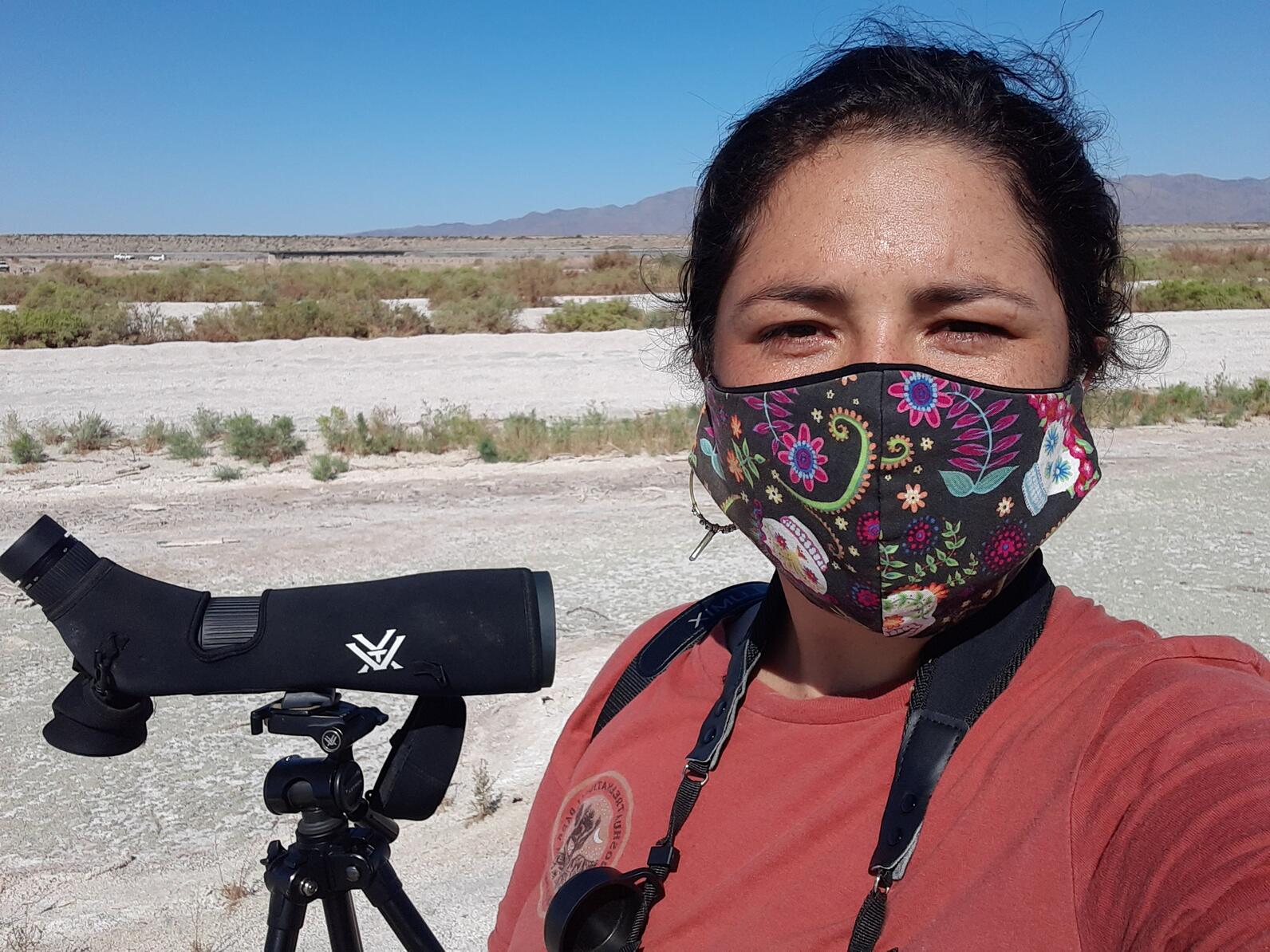
It was my second visit to the Salton Sea, so I was prepared for the thick, sticky mud as we trudged across the exposed playa towards the ever-retreating waterline. I was less prepared for the occasional breeze wafting the sulfurous whiff of rotten egg off California’s largest lake. I could already see the birds, lots and lots of birds, as we got closer. The National Audubon Society lists the Sea an Important Bird Area because of its status as a stopover site for migratory birds along the Pacific Flyway -- especially shorebirds and waterfowl. This fall, I stepped up to conduct monthly point count surveys for Audubon’s Salton Sea Program, and took my first literal steps through that sticky, stinky mud earlier this month.
I was joined by Audubon California Salton Sea Director Frank Ruiz and two interns, Camila and Hunter, as we conducted a point count survey at seven points along the Salton Sea. Our goal was to identify and count as many species as many birds as we possibly could (all properly socially distanced and masked, of course!). It sounds pretty straightforward, but there are hundreds of birds in the Sea that are hard to spot with the naked eye, or at times even with binoculars. In fact, it took us eight hours to survey those seven points around the Sea, but for the bird nerd, there is nothing more fun. We recorded a variety of birds, including Snowy Plovers, American White Pelicans, Western Grebes, Ruddy Ducks, and the less common Reddish Egret. Onshore, we spotted Roadrunners, Loggerhead Shrikes, and clouds of Barn Swallows, probably on their way to spend the northern winter in South America. During these point count surveys, Camila and Hunter also took water samples to track salinity levels and got stuck in the mud. That Salton Sea smell and “quicksand” mud are no joke.
It was inspiring -- and at the same time sad -- to see such a place exist and disappear at the same time. With water diversions, Salton Sea shoreline has been receding 40 to 60 feet every month according to Ruiz. Evaporating water concentrates remaining salts, affecting fish and micro-invertebrates, both important sources of food for birds in this area. As salinity levels continue to rise and the shoreline continues to recede, studying the birds at the Salton Sea is extremely important to understand population trends and dynamics of different bird species and their reactions to changing habitats. We’ll need to answer questions such as what is the threshold for salinity levels in a lake that can support birds and what type? What bird species are more susceptible to altering habitats and reasons why? How can we learn from the Salton Sea and not repeat a similar story elsewhere? With climate change and water scarcity across the arid west, habitats are changing and the Salton Sea is a major one.

In the upcoming year, I’ll head out to conduct more point count surveys, along with micro-invertebrate checks and water testing. Audubon will also involve local communities in this important work, collaborating with a nearby high school to educate students on the issues facing the Salton Sea and its changing ecosystem.






